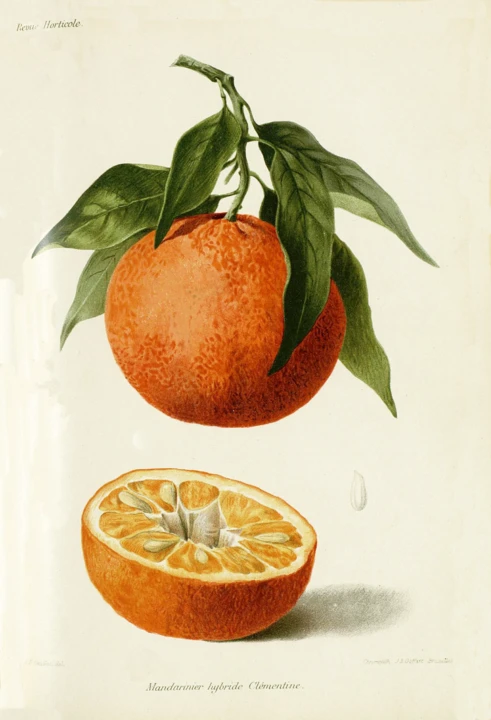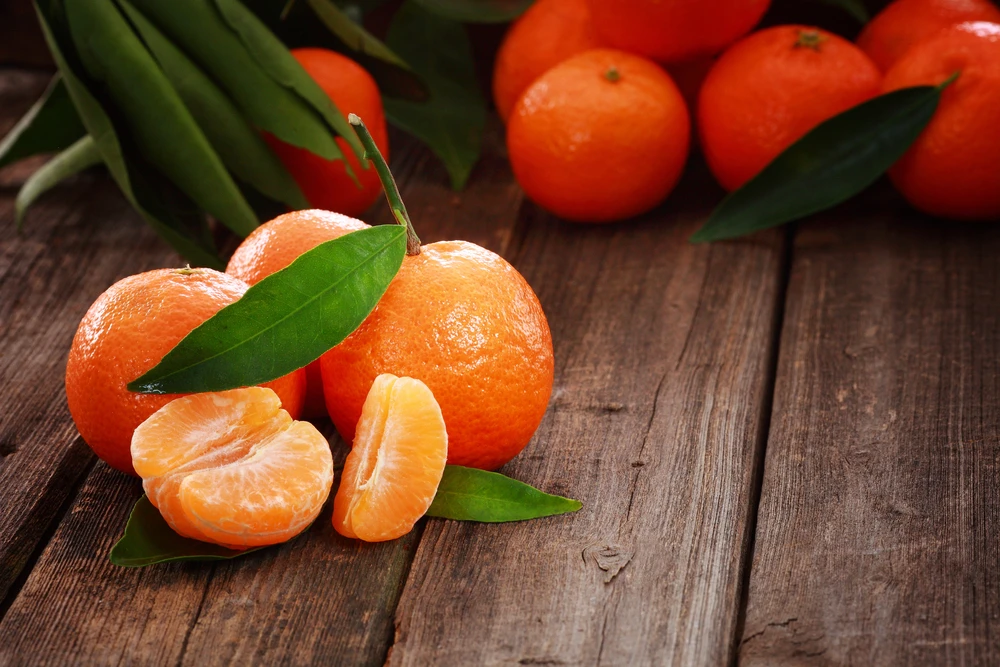Father Clement's clementine
Although often confused with the mandarin, the two citrus fruits are actually quite distinct, even if one wouldn't exist without the other. The origin of the clementine dates back to the end of the 19th century, in Algeria, thanks to the work of a missionary with a passion for botany, Father Clément. The latter, responsible for the nurseries of an orphanage, created this new variety of fruit, the result of a cross between a mandarin tree and a bigaradier. In botany, this type of creation is referred to as an "obtention". The clementine, smaller and a little less sweet than the mandarin, has the advantage of containing few or no seeds and being very easy to peel.
The botanical description of the clementine in 1902: Illustration chosen by monsieurdefrance.Com: By R. Guillot delineavit - Trabut, Louis, 1902. L'hybridation des Citrus: une nouvelle Tangérine "la Clémentine". Rev. horticole, Paris, pp. 232-234. 1 plate. on Hortalia, Domaine public, https://commons.wikimedia.org/w/index.php?curid=65354047
This fruit quickly won over the region's botanists, who wanted to honor its creator by calling it a "clementine". It was then introduced to Corsica, where it found an ideal terroir and became one of the island's symbols. Today, the Corsican clementine benefits from a Protected Geographical Indication (PGI), and represents almost 98% of French production. Although the original variety has disappeared, there are now several other types of clementine, including Tomatera, Reina, Victoria and Marisol.
How to choose a clementine?
To choose the right clementine, don't just rely on the color of the skin, which doesn't always indicate ripeness. You can even opt for a slightly green clementine. Prefer those that are firm and fleshy to the touch, and check that the stalk and leaf are still attached. Finally, smell is an excellent indicator: if it smells fragrant, it's ready to be enjoyed.
A good clementine has always kept its stalk and pretty green leaf. Photo chosen by monsieur de France: depositphotos.
The taste and health of clementines
The clementine is best enjoyed fresh, but it's not just a tasty fruit! In the kitchen, it also lends itself to the creation of desserts such as mousses, cakes, or as an accompaniment to savory dishes, such as scallops. Healthwise, it is a valuable source of vitamin C, particularly beneficial during winter, and also contains B vitamins that strengthen the immune system.





